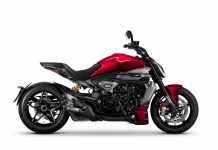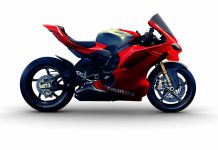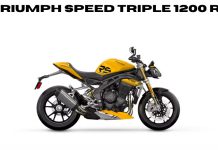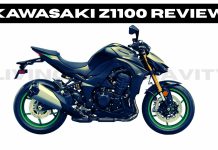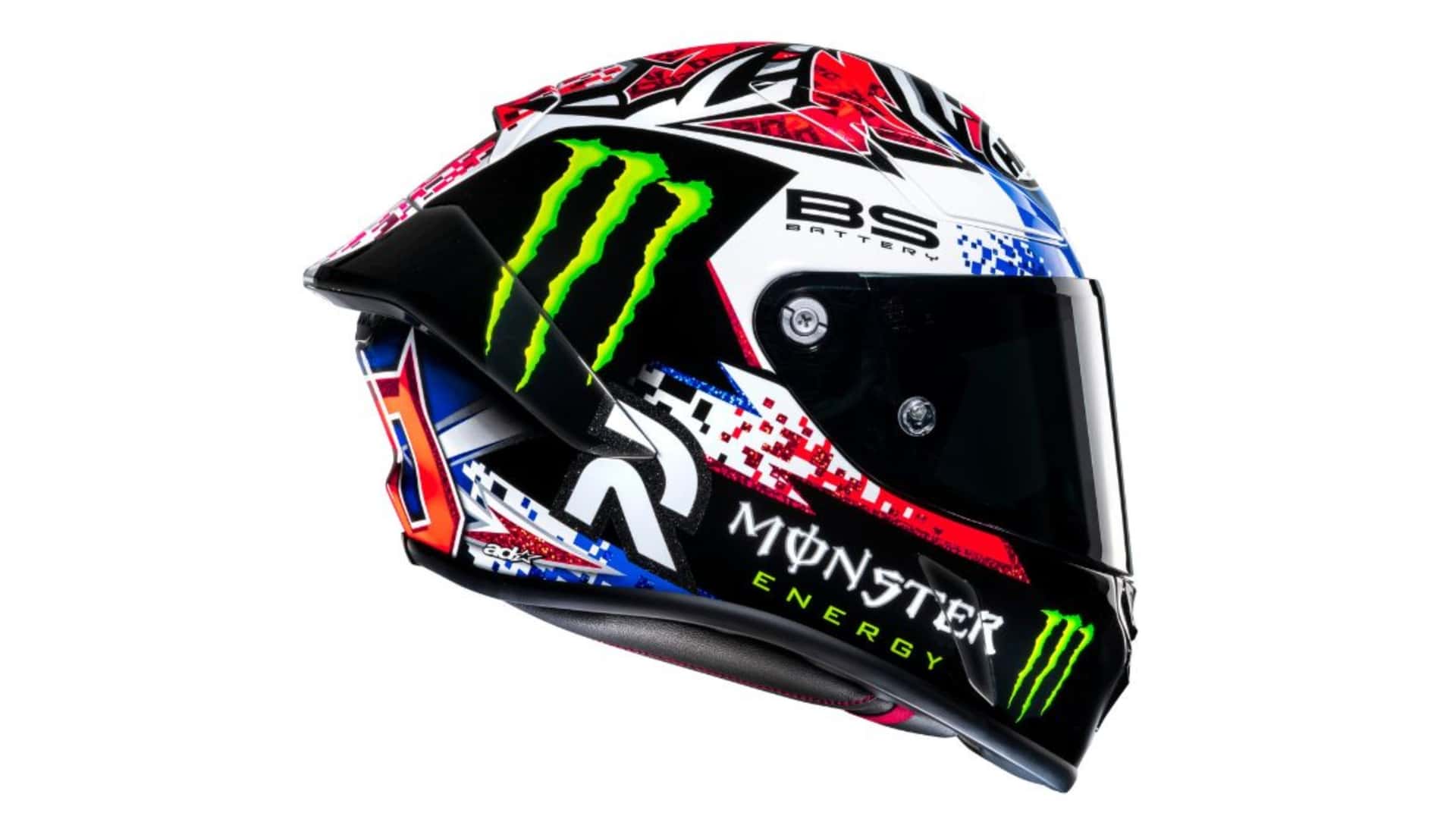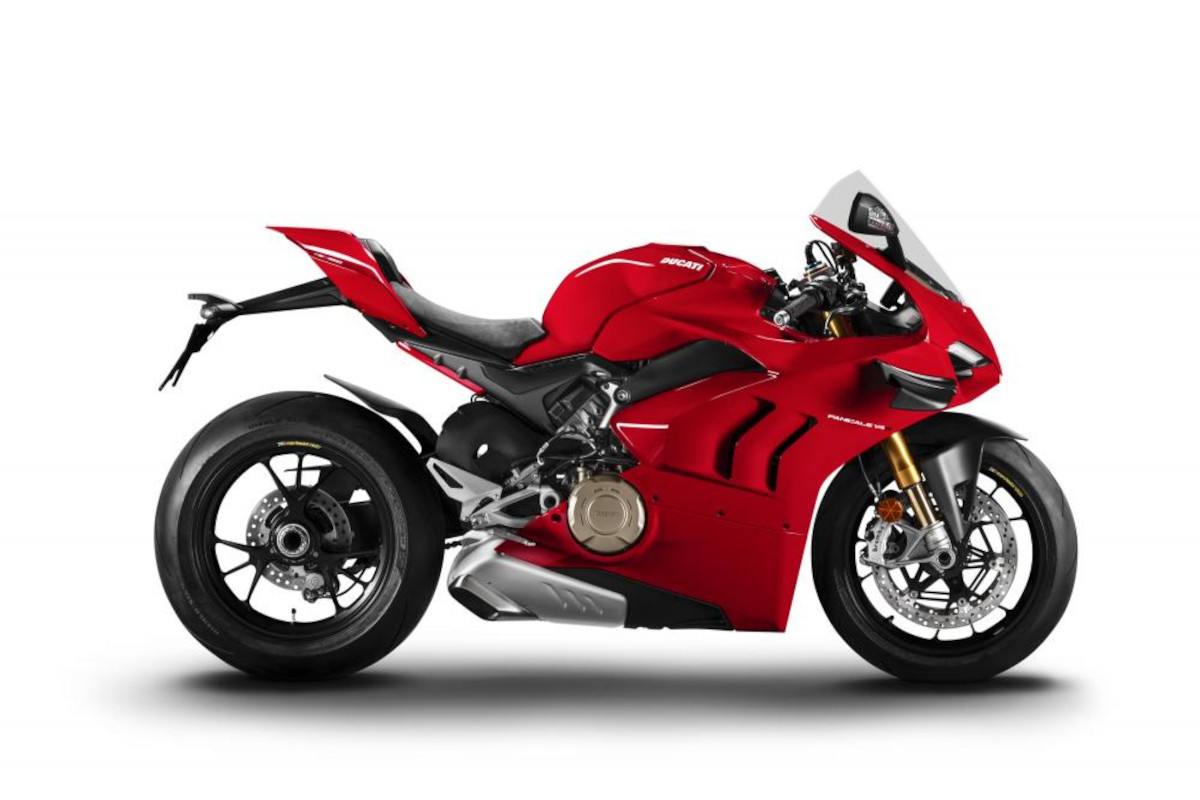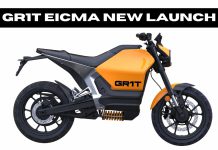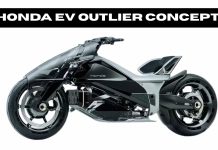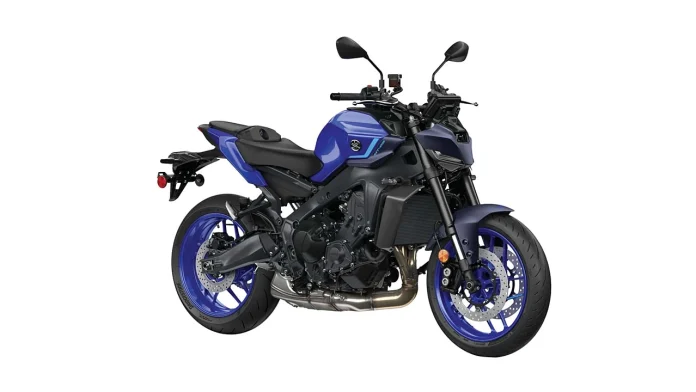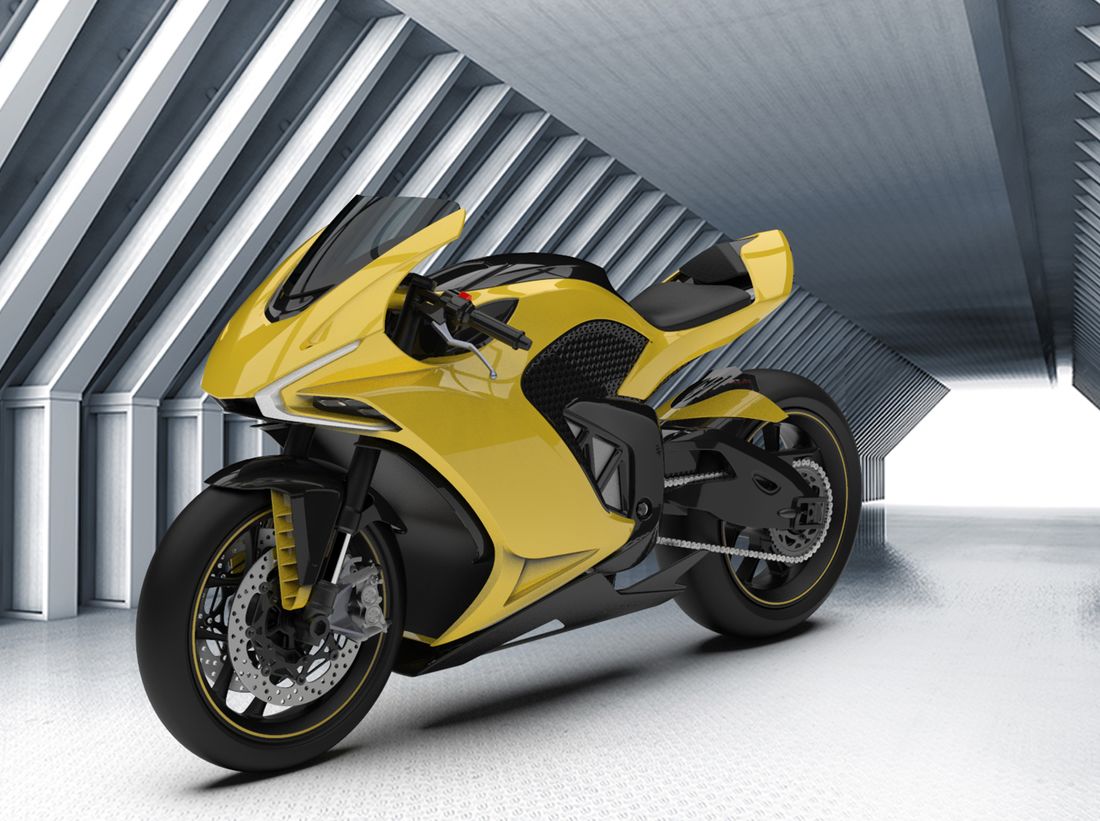1. Executive Summary
India Yamaha Motor (IYM), a prominent entity in the country’s premium two-wheeler segments, experienced a notable downturn in its sales performance during May 2025. The company recorded total sales of 46,086 units, marking a substantial 34.37% year-on-year (YoY) decline and a 1.58% month-on-month (MoM) decrease.
This performance stands in stark contrast to the overall Indian two-wheeler market, which demonstrated resilience with modest growth in domestic sales and robust export figures during the same period. The primary drivers of IYM’s decline appear to be the significant underperformance of its key volume-generating models, the RayZR scooter and the FZ motorcycle lineup, coupled with broader supply chain disruptions and intense competitive pressures within the premium segments.
Despite these challenges, IYM continues to adhere to its strategic focus on the premium market, targeting Gen Z and upper-middle-class consumers. The company is actively pursuing new product launches in higher displacement and electric segments, alongside substantial investments in marketing, brand building, and customer experience enhancements.
The analysis presented herein delves into the specific factors contributing to Yamaha’s May 2025 sales slump, benchmarks its performance against major competitors, and evaluates its strategic initiatives, concluding with a forward-looking perspective on its trajectory in the dynamic Indian two-wheeler landscape.

2. India’s Two-Wheeler Market: A May 2025 Snapshot
The Indian two-wheeler market in May 2025 presented a picture of mixed performance, characterized by overall growth in domestic sales but with notable shifts in segment dynamics and strong export momentum.
Overall Market Performance
The domestic two-wheeler market demonstrated resilience, recording a 2.2% year-on-year (YoY) growth in sales, reaching a total of 16,55,927 units in May 2025, up from 16,20,084 units in May 2024.1 Retail sales, as reported by the Federation of Automobile Dealers Associations (FADA), showed an even more robust increase of 7.31% YoY, with 16,52,637 units sold.3 This growth is particularly significant given that cumulative domestic sales for April-May 2025-26 saw a 7.6% decline compared to the previous fiscal year, indicating a strong rebound in May.1
Exports served as a considerable buffer for the industry, registering a healthy 21.7% YoY increase to 3,80,979 units in May 2025. This surge was predominantly driven by motorcycle exports, which escalated by 27.1%.1 This strong export performance highlights the increasing importance of international markets for Indian two-wheeler manufacturers.
Segment-wise Dynamics
A closer examination of the market reveals a divergent growth pattern within the two-wheeler categories. Scooter sales emerged as a key driver of domestic growth, experiencing a healthy 7.1% YoY increase to 5,79,507 units.1 This segment was notably led by popular models such as the Honda Activa, TVS Jupiter, and Suzuki Access.5 This indicates a sustained consumer preference for scooters, particularly in urban and semi-urban areas.
Conversely, domestic motorcycle sales remained largely stagnant, showing a marginal 0.0% change YoY, with 10,39,156 units sold.1 This flatness suggests that while overall volumes are maintained, growth is not uniform across all two-wheeler types.
The electric two-wheeler segment, especially the >250W category, continued its impressive growth trajectory. Sales nearly doubled to 78,322 units in May 2025 compared to the previous year, signaling a clear and accelerating consumer shift towards sustainable mobility solutions, particularly in urban centers.5
Key Market Trends and Consumer Shifts
The recovery observed in May was significantly bolstered by improving rural demand. Factors such as a strong Rabi harvest, a series of auspicious marriage dates, and pre-monsoon demand contributed to robust sales in semi-urban and rural markets.2 Data indicates that rural markets accounted for a substantial 60.8% of total two-wheeler sales, underscoring their critical role in driving market volumes.4 This growing influence of rural markets implies that manufacturers must tailor their offerings and marketing strategies to meet the specific needs and aspirations of this demographic.
Simultaneously, there is a discernible long-term consumer shift towards higher displacement, feature-rich, and premium models. The share of entry-level motorcycles (sub-125cc) has seen a slight decline from 75.9% to 75.5% in FY25, reflecting a growing appetite among consumers for more aspirational and technologically advanced products.10 This trend, often referred to as premiumization, indicates that while affordability remains a factor, a segment of buyers is willing to invest more for enhanced performance, features, and brand appeal.
Positive macroeconomic indicators are also contributing to a cautiously optimistic outlook for the coming months. Expectations of an above-normal monsoon forecast (106% of long-period average) and recent repo rate cuts by the Reserve Bank of India (RBI) are anticipated to boost affordability and improve consumer sentiment across various segments.1 These factors are expected to provide further impetus to demand, particularly in rural areas.
An examination of the market reveals a critical divergence in growth patterns within the two-wheeler segments. The robust growth of scooters contrasts sharply with the stagnation of motorcycles. This means that manufacturers with a strong scooter portfolio are better positioned to capture market expansion. While India Yamaha Motor has a significant presence in the scooter segment with models like RayZR, Fascino, and Aerox, its overall sales decline suggests that its scooter portfolio is either underperforming relative to market leaders or that the decline in its motorcycle segment is too severe to be offset.
This highlights that merely having products in a growing segment is insufficient; competitive strength and effective market penetration within that segment are paramount. A flat motorcycle market, especially in the commuter segment which Yamaha is actively exiting, places immense pressure on its premium motorcycle sales to compensate for the lost volume.
Furthermore, the strong performance of rural markets, coupled with the ongoing premiumization trend, presents a complex demand landscape. Multiple reports emphasize rural demand as a key driver for two-wheeler retail sales in May 2025, alongside a long-term consumer shift towards premium, feature-rich models. Rural demand primarily benefits entry-level and mid-segment offerings that cater to utility and aspirational upgrades. In contrast, premiumization points towards higher-displacement, more expensive models. India Yamaha Motor focuses exclusively on the premium segment, explicitly avoiding the high-volume entry-level market.10
The May 2025 data suggests that while the market is premiumizing, the specific drivers of overall growth, particularly rural demand, may not be fully translating into sales for Yamaha’s higher-end premium offerings (e.g., MT-15, R15, and especially R3/MT-03). This indicates a potential mismatch between the type of premiumization driven by rural markets (e.g., upgrades from basic commuters to 150cc bikes or premium 125cc scooters) and Yamaha’s more niche premium focus.
For premium players, understanding the nuances of premiumization across different demographics—urban versus rural, Gen Z versus older buyers—is crucial. A “premium” product for a rural customer upgrading from a commuter might differ significantly from a “premium” product for an urban enthusiast. Yamaha needs to ensure its premium offerings are accessible and appealing to the segment of premium buyers that is actually driving market growth.
3. India Yamaha Motor’s Performance in May 2025
India Yamaha Motor’s sales performance in May 2025 indicates a period of significant contraction, contrasting sharply with its positioning as a player in the premium segment.
Total Sales Analysis
In May 2025, India Yamaha Motor sold a total of 46,086 units.13 This figure represents a substantial 34.37% year-on-year (YoY) decline when compared to the 70,222 units sold in May 2024.13 The company also experienced a month-on-month (MoM) decline of 1.58% from the 46,826 units sold in April 2025.13 The absolute volume loss for the month stood at 24,136 units YoY and 740 units MoM.13 This performance meant that the company did not achieve any positive growth in either YoY or MoM aspects for its overall sales.13 Despite its focus on premium segments, Yamaha’s overall market share in the Indian two-wheeler market remained modest at 4% in FY25.10
Detailed Product-wise Sales Breakdown
The decline in overall sales can be largely attributed to the underperformance of IYM’s key models:
- RayZR Scooter: This model remained Yamaha’s overall best-seller, with 13,023 units sold, accounting for 28.26% of the company’s total sales.13 However, the RayZR faced a significant sales decline of 34.21% YoY (from 19,794 units in May 2024) and an 8.18% MoM decline (from 14,183 units in April 2025). This resulted in a volume loss of 6,771 units YoY and 1,160 units MoM for this crucial model.13
- FZ Lineup: As Yamaha’s best-selling motorcycle and the second-highest selling model overall, the FZ lineup sold 12,979 units, constituting 28.16% of total sales.13 Similar to the RayZR, FZ sales dropped by 9.61% YoY (from 14,359 units) and 3.73% MoM (from 13,482 units), leading to a volume loss of 1,380 units YoY and 503 units MoM.13
- MT-15: This premium motorcycle sold 7,034 units, securing the third position in Yamaha’s sales chart.13 It witnessed a substantial 51.86% YoY decline but showed a marginal 0.13% MoM growth.13
- R15: With 5,997 units sold, the R15 secured the fourth position.13 It experienced a significant 42.53% YoY decline but posted a strong 22.19% MoM growth, adding 1,089 units in volume MoM.13
- Fascino: Sales for the Fascino stood at 5,251 units, making up 11.39% of Yamaha’s total sales.13 This model also saw a considerable downfall with 43.72% YoY and 7.52% MoM declines.13
- Aerox 155: The Aerox 155 was the only model in Yamaha’s portfolio to register positive growth in both YoY and MoM aspects.13 It sold 1,760 units, achieving a 5.33% YoY and 18.60% MoM growth, with volume gains of 89 units YoY and 276 units MoM.13
- R3 and MT-03 (Flagship Offerings): These high-end models sold a combined total of 42 units.13 While this represented a doubling in volume YoY compared to 21 units sold last year, indicating growth from a very low base, it also marked a 36.36% MoM decline from 66 units sold in April 2025.13
The table below summarizes India Yamaha Motor’s sales performance for May 2025:
| Model | Units Sold (May 2025) | % of Total Yamaha Sales | Units Sold (May 2024) | YoY % Change | Units Sold (April 2025) | MoM % Change |
| RayZR | 13,023 | 28.26% | 19,794 | -34.21% | 14,183 | -8.18% |
| FZ Lineup | 12,979 | 28.16% | 14,359 | -9.61% | 13,482 | -3.73% |
| MT-15 | 7,034 | 15.26% | – | -51.86% | – | 0.13% |
| R15 | 5,997 | 13.01% | – | -42.53% | – | 22.19% |
| Fascino | 5,251 | 11.39% | – | -43.72% | – | -7.52% |
| Aerox 155 | 1,760 | 3.82% | – | 5.33% | – | 18.60% |
| R3 / MT-03 | 42 | 0.09% | 21 | 100.00% | 66 | -36.36% |
| Total | 46,086 | 100.00% | 70,222 | -34.37% | 46,826 | -1.58% |
Note: YoY and MoM percentage changes for MT-15, R15, and Fascino are based on the provided text, as specific prior month/year unit figures were not always available for direct calculation in the primary source.13 The table uses the provided percentages for these models.
The substantial decline in Yamaha’s overall sales is directly attributable to the poor performance of its volume-generating models, RayZR and FZ. Yamaha’s total sales are down significantly on both a YoY and MoM basis. The top two sellers, RayZR and FZ, collectively account for over 56% of the company’s total sales volume.13 Both of these models experienced major YoY and MoM declines; the RayZR saw a 34.21% YoY and 8.18% MoM drop, while the FZ lineup declined by 9.61% YoY and 3.73% MoM.13
The combined volume loss from these two models alone (8,151 units YoY) represents a substantial portion of Yamaha’s total YoY volume loss (24,136 units).13 This indicates that the sales problem is not confined to niche segments but is deeply rooted in Yamaha’s core portfolio. Even models that are typically considered “best-sellers” are struggling severely, pulling down the entire company’s performance. While the Aerox 155 showed encouraging positive growth, its relatively small volume (1,760 units) is insufficient to offset the significant losses from the higher-volume RayZR and FZ models.13 This suggests that Yamaha’s premium strategy, while aspirational, is currently undermined by the underperformance of its more accessible premium models, pointing to potential issues with product competitiveness, market positioning, or demand generation even within its established premium segments.
Furthermore, the performance of Yamaha’s premium motorcycle segment presents mixed signals. While the MT-15 and R15 show substantial YoY declines (51.86% and 42.53% respectively), the R15 notably achieved strong MoM growth of 22.19%.13 The flagship R3/MT-03 models, despite doubling their sales YoY from a very small base (21 units to 42 units), experienced a MoM decline of 36.36% from April’s 66 units.13 The significant YoY declines for MT-15 and R15 are alarming and may indicate a long-term erosion of demand or increased competition.
The MoM rebound for R15, and marginal growth for MT-15, could be a short-term recovery or a response to tactical efforts, possibly bouncing back from a particularly weak April (as seen in April 2025 sales figures where these models also saw significant declines).15 However, the persistent large YoY declines suggest deeper, systemic issues that tactical MoM gains cannot fully mask. This indicates that while there may be short-term demand fluctuations, the long-term trend for these models is concerning.
Yamaha needs to critically assess the reasons behind these severe YoY declines in its premium motorcycles. This could stem from intense competition, evolving customer expectations for features and performance at their price point, or a lack of consistent model updates that resonate with the target audience. The volatility in flagship sales (R3/MT-03) further highlights the niche and sensitive nature of the ultra-premium segment in India, where high costs can deter even aspirational buyers.14
4. Competitive Landscape and Yamaha’s Positioning
The Indian two-wheeler market is characterized by intense competition, with several players vying for market share across various segments. Unlike volume generators such as Hero MotoCorp, Honda, Bajaj, Suzuki, and TVS, Yamaha has adopted a strategy of operating exclusively in the premium segment.13 This positioning places Yamaha in a distinct competitive arena, where its performance is measured not just by absolute numbers but also by its ability to capture and retain market share within its chosen niche.
Overview of Top Competitors’ May 2025 Sales
The broader market saw varied performances among key players in May 2025:
- Hero MotoCorp: Reclaimed the top position by dispatching 5,07,701 units overall.16 Its domestic sales stood at 4,88,997 units, marking a marginal 1.99% YoY growth.17 Hero’s motorcycle sales increased by 0.84% YoY, while its scooter sales saw a significant surge of 20.8% YoY.17
- Honda Motorcycle & Scooter India (HMSI): Reported total sales of 4,65,115 units.19 Its domestic sales were 4,17,256 units, reflecting a 7.40% YoY decline and a 1.34% MoM decline.18 Despite this, Honda remains a dominant force, particularly in the scooter segment, with its Activa leading sales.5 Honda also strategically expanded its premium BigWing portfolio with seven new launches in May 2025.16
- TVS Motor Company: Demonstrated robust growth, with total sales (two-wheelers and three-wheelers combined) reaching 4,31,275 units, a 16.59% YoY increase.21 Domestic two-wheeler sales grew by 14.07% YoY to 3,09,287 units.18 Motorcycle sales surged by 22.07% YoY, and scooter sales by 14.76% YoY. Notably, TVS also experienced significant growth in its e-scooter sales, up 49.81% YoY.21
- Bajaj Auto: Reported an 8% YoY increase in total sales (two-wheelers and commercial vehicles) to 3,84,621 units.23 While domestic sales remained stable, exports saw a substantial 22% YoY jump.24 Bajaj maintains a strong presence in the motorcycle segment, with its Pulsar lineup performing consistently.25
- Suzuki Motorcycle India: Registered a 16% YoY growth in total sales, reaching 1,28,896 units. Domestic sales increased by 17%, and exports by 8%.27 The Suzuki Access 125 continues to be its top seller and is recognized as the most popular 125cc scooter in India.7
- Royal Enfield: Showed strong performance in the premium motorcycle segment, posting a 19.34% YoY growth in domestic dispatches, with 75,820 units sold.18
The table below provides a comparative overview of key competitors’ domestic sales in May 2025:
| Manufacturer | Domestic Sales (May 2025) | Domestic Sales (May 2024) | YoY % Change | Domestic Sales (April 2025) | MoM % Change |
| Hero MotoCorp | 4,88,997 | 4,79,450 | 1.99% | 2,88,254 | 69.64% |
| Honda | 4,17,256 | 4,50,581 | -7.40% | 4,22,931 | -1.34% |
| TVS | 3,09,287 | 2,71,140 | 14.07% | 3,23,647 | -4.44% |
| Bajaj | 1,91,412 | 1,88,340 | 1.63% | 1,88,615 | 1.48% |
| Suzuki | 1,07,780 | 92,032 | 17.11% | 95,214 | 13.20% |
| Royal Enfield | 75,820 | 63,531 | 19.34% | 76,002 | -0.24% |
| India Yamaha | 46,086 | 70,222 | -34.37% | 46,826 | -1.58% |
Note: Data for competitors is primarily domestic dispatches/retail sales as available in sources.16 Yamaha’s domestic sales are its total sales as it operates only in India’s premium segment.
Yamaha’s Market Share in Premium Segments
In FY25, Yamaha demonstrated a strong foothold in specific premium segments, capturing nearly 10% of India’s 150cc+ motorcycle segment and leading the 150–200cc scooter segment with an impressive 80% market share.10 This indicates that despite its modest overall market share of 4% 10, Yamaha’s strategic bet on premium positioning had shown success in the previous fiscal year. The company’s strategy is explicitly to target Gen Z and upper-middle-class customers, focusing exclusively on the premium market and avoiding the high-volume entry-level segments.10
Comparative Analysis of Yamaha’s Key Models vs. Rivals
The sales performance in May 2025, however, suggests that Yamaha is facing increasing competitive pressure, particularly in its volume-generating premium models.
- 125cc Scooter Segment (RayZR vs. Suzuki Access 125, TVS Jupiter, Honda Activa):
- While the RayZR is Yamaha’s best-selling scooter, its sales of 13,023 units in May 2025 are significantly lower than those of market leaders.13 For instance, the Honda Activa sold 1,90,713 units, the TVS Jupiter 97,606 units, and the Suzuki Access 125 sold 75,778 units in the same month.6 The Suzuki Access 125 is widely recognized as the “most popular 125cc scooter in India”.7
- From a product specification perspective, the RayZR 125 Fi Hybrid boasts a significantly better claimed mileage of 71.33 kmpl compared to the Access 125’s 45 kmpl.29 The RayZR is also noted as the lightest scooter in its 125cc segment at 99kg and offers good brakes with CBS.31 However, the RayZR has been criticized for lacking certain features like navigation, boot light, and an external fuel filler cap, which some rivals may offer.31 The Access 125, on the other hand, is praised for its comfortable riding posture and external fuel filler.31
- Despite the RayZR’s technical advantages and a user survey indicating a 63% preference over the Access 125 29, its declining sales suggest that these advantages are not effectively translating into market success, or that other factors like brand perception, dealer network, or competitive pricing are overriding these benefits.
- 150cc+ Motorcycle Segment (FZ Lineup vs. TVS Apache, Bajaj Pulsar, Hero Xtreme, Suzuki Gixxer):
- Yamaha’s FZ lineup, with 12,979 units sold in May 2025, faces intense competition.13 In March 2025, the TVS Apache lineup dominated the 150-200cc segment with 44,214 units, followed by the Bajaj Pulsar with 39,611 units.26
- The Yamaha FZ-S Fi V4 (149cc, 12.4 PS) is positioned for its “unmatched refinement and looks,” appealing to the “Urban Stylist”.25 In contrast, the TVS Apache RTR 160 4V (159.7cc, 17.55 PS) offers significantly more power and is engineered for performance.25 The Bajaj Pulsar 150 (149.50cc, 14 PS) is known for its value-for-money proposition and robust build.25
- While the FZ-S Fi Hybrid boasts better mileage (60 kmpl) compared to the Apache 160 4V (49.80 kmpl) and features a TFT console with smartphone connectivity and a starter motor generator 32, it is also priced higher than some rivals.32 The FZ lineup’s sales decline, despite its features and positioning, suggests that it is struggling to maintain its competitive edge against more powerful or value-for-money offerings from rivals. The potential discontinuation of the FZ 25 model due to consistently low sales and a lack of modern features compared to rivals like the Bajaj Pulsar N250, Suzuki Gixxer 250, and KTM Duke 250 further highlights this competitive challenge.33 The market is increasingly demanding tech-loaded, aggressive-looking motorcycles in this range, which the FZ 25 reportedly lacks.33
The data presents a clear contradiction: Yamaha’s reported strong market share in premium segments for FY25 10 versus its declining sales in May 2025 and comparison with top competitors in specific segments. While Yamaha had a strong market share in FY25, the May 2025 data suggests it is either losing ground or facing increased pressure.
The detailed comparisons of models like the RayZR against the Access 125, and the FZ against the Apache and Pulsar, highlight that while Yamaha’s models might offer certain advantages (e.g., RayZR’s mileage), they may be perceived as lacking in other critical areas such as features, perceived value for price, or raw power.
This is evident in the FZ25’s potential discontinuation, which further solidifies the view regarding product competitiveness.33 User surveys indicating a preference for Yamaha models (e.g., 63% preference for RayZR over Access 125, 60% for FZ-S Fi over Apache RTR 160 4V) 31 despite lower actual sales figures, point to a potential gap between perceived product quality and features, and actual market penetration or sales.
This discrepancy could be attributed to factors such as pricing strategies, product availability, or the effectiveness of marketing and distribution channels. For Yamaha, maintaining its market share in the premium segment requires continuous innovation and the delivery of highly competitive feature sets, especially as rivals aggressively update their premium offerings.
5. Factors Contributing to Yamaha’s Sales Decline
The significant sales decline experienced by India Yamaha Motor in May 2025 can be attributed to a confluence of internal and external factors, ranging from broader market dynamics to specific operational and strategic challenges.
Impact of Broader Market Dynamics
While the overall two-wheeler market showed resilience in May, particularly driven by rural demand and scooter sales, Yamaha’s performance did not align with these positive trends. The strength of rural demand, fueled by a robust Rabi harvest and auspicious marriage dates, primarily benefited entry-level and mid-segment offerings.2 Although there is a broader market trend towards premiumization, the specific type of premiumization driven by rural markets (e.g., upgrades from basic commuters to 150cc bikes or premium 125cc scooters) may not fully align with Yamaha’s higher-end premium focus (e.g., MT-15, R15, and especially R3/MT-03).4 This suggests a potential mismatch between the segments driving overall market growth and Yamaha’s niche product offerings.
Product Portfolio Challenges and Consumer Preferences
A critical factor in Yamaha’s sales decline is the underperformance of its core volume models. The RayZR scooter and FZ motorcycle lineup, which together account for over 56% of Yamaha’s total sales, both experienced significant YoY and MoM declines.13 This indicates a vulnerability in the company’s established premium portfolio. While Yamaha’s premium models are designed for performance and style, the market is increasingly demanding tech-loaded and aggressive-looking bikes, even in the 150-200cc and 200-300cc segments.25
The potential discontinuation of the FZ 25 model highlights this challenge explicitly. It has struggled with consistently low sales against rivals like the Bajaj Pulsar N250, Suzuki Gixxer 250, and KTM Duke 250, which offer more modern features and better performance-to-price ratios.33
The FZ 25 reportedly lacks the sporty appeal and digital connectivity that modern riders expect, indicating a gap in its feature set relative to evolving consumer preferences.33 This suggests that while Yamaha’s strategy to focus on premium is sound in principle, its execution or specific product offerings within this segment are not resonating sufficiently with consumer expectations or are being outmaneuvered by competitors.
Supply Chain and Production Issues
Yamaha Motor Co., Ltd.’s consolidated business results for Q1 FY25 (January-March) reported a decline in revenue and profits globally, partly due to lower unit sales of motorcycles in emerging markets, including India.35 A significant contributing factor cited was production and shipment suspensions in Vietnam, triggered in part by “defective engine stamping issues”.35 This indicates that Yamaha’s sales decline in India in May 2025 may not solely be a demand-side problem but also a consequence of supply-side constraints. Production disruptions in Q1 would logically impact sales in subsequent months like May due to the inventory pipeline.
While a separate report indicates Yamaha’s sales in Vietnam itself were up 23.4% YTD May 2025, this could reflect a strong underlying demand or a recovery post-Q1, but the global company’s explicit statement about production issues impacting emerging markets including India points to a direct causal link for the sales decline.37 The company is actively working on company-wide cost controls, pricing strategies, and flexible production adjustments to minimize the effects of such disruptions and manage inventory levels.35
Regulatory Environment
The implementation of stricter emission norms in India continues to impact the two-wheeler industry, including Yamaha. The BS6 Phase 2 (BS 6.2) standards, introduced in April 2025, further limit pollutant levels and mandate Real Driving Emissions (RDE) tests and advanced OBD-2 systems.38 The transition from BS4 to BS6 (Phase 1) already led to a 10-15% increase in two-wheeler prices due to the adoption of costly fuel injection systems over carburetors, which subsequently resulted in a slight drop in sales.38
While the transition to Phase 2 was less significant, these regulatory-driven price increases can be particularly impactful for a company like Yamaha, which focuses on premium products. A 10-15% hike on already higher-priced vehicles can deter purchases, especially if competitors offer better value or features at similar price points. Yamaha must justify its premium pricing through compelling features, superior performance, and an enhanced customer experience to overcome this regulatory-induced cost burden.
Dealer Network and After-Sales Service Perceptions
While Yamaha is strategically investing in enhancing its customer experience through initiatives like “Blue Square” premium dealerships, MotoGP sponsorship (“The Call of the Blue” campaign), a 5-year Roadside Assistance (RSA) program, and a 10-year ‘Total Warranty Program’ 40, there are indications of customer dissatisfaction with after-sales service at the ground level. Customer reviews and industry studies suggest issues such as arrogant staff, poor quality work, and difficulties in service booking.45 The J.D. Power 2025 India Two-Wheeler Initial Quality Study found that quality concerns tend to increase with vehicle usage, impacting owner perception and future purchase decisions.46 The study also noted that if initial quality expectations are not sustained, customers may hesitate to repurchase the same brand.46
This gap between Yamaha’s strategic intent for premium customer experience and the operational reality at some touchpoints can erode brand trust and significantly impact repurchase decisions. Although Yamaha is actively working to address this through initiatives like the National 3S Grand Prix to upskill dealer staff and drive service quality 47, the full benefits of these programs may take time to translate into consistently positive customer experiences across its entire network. For a premium brand, customer service is not merely a hygiene factor but a crucial differentiator that can either justify premium pricing or drive customers to seek alternatives.
6. Yamaha’s Strategic Response and Future Outlook
In response to market dynamics and its recent performance, India Yamaha Motor is reinforcing its strategic direction, focusing on premiumization, product expansion, and enhanced customer engagement.
Reinforced Premium Segment Focus
Yamaha’s core strategy remains firmly rooted in the premium segment, with a clear mandate to target Gen Z and upper-middle-class customers.10 The company has explicitly stated its intention not to re-enter the high-volume 100-125cc segment, which constitutes a significant portion (around 80%) of total motorcycle sales, to avoid price and volume wars with established players.12 Instead, the focus is squarely on scooters 125cc and above, and motorcycles 150cc and above, with a special emphasis on the 300cc+ segment.12 This strategic pivot aims to cater to youngsters who prioritize performance and style over utility, aligning with the broader market trend of premiumization.12 Yamaha will continue to manufacture commuter motorcycles in India, but primarily for export markets.12
Upcoming Product Launches
To bolster its premium portfolio and address evolving market demands, Yamaha has a robust pipeline of new products. The company showcased its iconic R-Series (R15, R3, R7) and MT range (MT-15, MT-03, MT-09) at the Bharat Mobility Global Expo 2025.48 Key upcoming launches for 2025-2026 include:
- Higher Displacement Motorcycles: The R3, R7, MT-09, and Tenere 700 are expected to launch, with bookings for the MT-09 commencing in June-July 2025.48 These models, often imported as Completely Built Units (CBUs) and sold through select Blue Square showrooms, aim to strengthen Yamaha’s presence in the enthusiast and adventure segments.43
- Hybrid Technology: Yamaha has already launched India’s first hybrid motorcycle in the 150cc category, the 2025 FZ-S Fi DLX, and continues to equip its scooters (like RayZR and Fascino) with Smart Motor Generator (SMG) technology for improved fuel efficiency and torque.43
- Electric Vehicles: While Yamaha has introduced an EV in Europe, its approach for India is cautious, aiming to enter with a differentiated, high-performance electric product due to existing constraints in price, range, and speed for mass adoption.10 The Suzuki e-Access, an electric scooter from a competitor, has already begun production, indicating the growing EV landscape.16 Yamaha’s future plans include a focus on both in-house EV platform development and external collaborations.51
Marketing and Brand Building Initiatives
Yamaha is actively investing in brand building to reinforce its “Racing DNA” and connect with its target audience. The company has extended its partnership as an official sponsor of the Monster Energy Yamaha MotoGP team for the 2025 season.40 The “The Call of the Blue” brand campaign, which resonates deeply with young Yamaha fans, will be prominently featured on MotoGP bikes, rider leathers, and team merchandise, aiming to elevate the connection with fans globally and inspire enthusiasm for racing and the Yamaha legacy.40
Furthermore, Yamaha is expanding its “Blue Square” premium dealership network, which are showrooms designed to offer a refined customer experience and showcase the entire range of two-wheelers, apparel, and accessories.42 The company aims to roughly double the number of these dealerships in India, recognizing them as crucial physical touchpoints for customers.42
Enhancements in Customer Experience
Recognizing the importance of customer satisfaction, Yamaha is implementing several initiatives to enhance its after-sales support and overall customer experience. These include:
- Extended Warranty and Roadside Assistance: India Yamaha Motor has introduced a 5-year Roadside Assistance (RSA) program, complementing its recent 10-year ‘Total Warranty Program’ (2+8 years extended warranty).44 These programs are designed to offer peace of mind to customers during unforeseen on-road emergencies and ensure long-term support.
- Upskilling Dealership Staff: Yamaha hosted the National 3S Grand Prix 2024-25, a nationwide competition evaluating dealership staff across sales, service, and spares categories.47 This initiative, which saw record participation, serves as an internal mechanism to drive service quality across Yamaha’s network and is linked to the Yamaha Motor Academy (YMA) for continuous staff development.47 The winner of the technician category will represent India at the World Technician Grand Prix in Japan, underscoring the commitment to global quality standards.47
Manufacturing and Export Ambitions
India is cementing its position as Yamaha Motor’s second-largest global market after the ASEAN region.10 Under its new Chairman and MD for India, Itaru Otani, Yamaha is reassessing its India plans with an eye on the premium market and export possibilities.10 The company’s global management views India as a potential “second major global manufacturing hub after Indonesia”.10 Yamaha aims to leverage local development advantages such as close-to-market feedback loops, cost reductions, abundant engineering talent, and access to engineering service firms to boost its Quality, Delivery, and Cost (QDC) metrics and deliver globally competitive products.10
Expanding to developed markets also necessitates adherence to stricter environmental and exterior quality standards, which in turn raises competitiveness in India.10 In FY25, Yamaha sold 6.93 lakh two-wheelers in India and exported 2.96 lakh units, making it the fourth largest exporter of two-wheelers from India.10 The company’s exports saw a significant 70% YoY increase in May 2025.53
Yamaha’s explicit strategy to exit the commuter segment and focus solely on premium products is a bold, high-risk, high-reward move. This strategic decision creates a massive volume gap that must be compensated by significantly higher sales and profitability per unit in the premium segment. The success of this strategy hinges entirely on the appeal, competitive pricing, and market acceptance of its new premium and electric offerings. If these new premium models do not gain substantial traction quickly, Yamaha’s overall market share and sales volume will continue to shrink, potentially making its position in India precarious despite its global manufacturing and export ambitions.
The company’s medium-term management plan (2025–2027) aims for a 6% revenue growth CAGR and a 10% Return on Sales (ROS), with a target of achieving 42% market share in the premium segment in ASEAN and emerging markets.51 To achieve this, Yamaha plans to strengthen the sporty image of the brand for Gen Z, expand hands-on events like test rides and touring, and combine digital and real experiences through 1-to-1 communication using unique Y-IDs and the Y-TRAC app.51 These efforts are crucial for recovering market share lost due to past supply problems and driving future growth.51
7. Conclusion and Strategic Recommendations
India Yamaha Motor’s performance in May 2025 highlights a critical juncture for the company. While the broader Indian two-wheeler market exhibits resilience and a clear shift towards premiumization and scooters, Yamaha’s overall sales experienced a significant decline. This downturn is primarily attributable to the underperformance of its key volume models, the RayZR and FZ, which are facing intense competition and potentially failing to meet evolving consumer expectations for features and value. Compounding these challenges are global supply chain disruptions, regulatory pressures leading to higher product costs, and persistent issues in after-sales service that undermine customer satisfaction.
Despite these headwinds, Yamaha’s strategic direction to focus exclusively on the premium segment aligns with a discernible market trend. The company possesses a robust pipeline of new, higher-displacement, and hybrid/electric models, coupled with substantial investments in brand building and customer experience initiatives. However, the disconnect between strategic intent and current market execution, particularly in converting product advantages and marketing efforts into tangible sales, is evident.
To navigate these challenges and capitalize on opportunities in the premium two-wheeler segment, the following strategic recommendations are put forth for India Yamaha Motor:
- Reinvigorate Core Premium Offerings: A thorough re-evaluation of the RayZR and FZ lineups is essential. This includes enhancing their feature sets (e.g., advanced digital connectivity, improved comfort, competitive aesthetics) and ensuring their value proposition is compelling against aggressive rivals. Tactical pricing adjustments or attractive financing options may be necessary to stimulate demand in the short term, while long-term product development focuses on differentiation that truly justifies their premium positioning.
- Accelerate Introduction of Next-Gen Premium Models: While a strong pipeline is in place, the timely and effective launch of models like the R3, MT-09, R7, and the e-Access is crucial. These models must be competitively priced and supported by aggressive marketing to quickly capture market share in their respective niches. Given the volatility in flagship sales, a focus on building consistent demand for these high-value products is paramount.
- Address Supply Chain Vulnerabilities: The impact of external supply chain issues, such as the Vietnam production challenges, underscores the need for robust supply chain resilience. Expediting the establishment of India as a major global manufacturing hub can mitigate future disruptions, ensure consistent product availability, and potentially reduce costs, thereby improving competitiveness.
- Enhance End-to-End Customer Experience: While investments in Blue Square showrooms and warranty programs are positive, it is imperative to ensure these translate into consistent, high-quality service at every customer touchpoint. Addressing negative feedback regarding after-sales service, particularly staff attitude and service quality, is critical. This requires continuous training, performance monitoring, and empowering dealership staff to resolve customer issues effectively. A premium product demands a premium service experience to foster loyalty and positive word-of-mouth.
- Refine Premiumization Strategy for Diverse Demographics: While targeting Gen Z and upper-middle-class is appropriate, Yamaha should further segment this premium audience. Understanding the specific aspirational needs and willingness-to-pay of urban versus semi-urban/rural premium buyers can help tailor product features, pricing, and marketing messages more effectively. Experiential marketing events should be strategically designed to resonate with these diverse customer groups.
By proactively addressing these areas, India Yamaha Motor can strengthen its position in the premium segment, convert its strategic vision into sustained sales growth, and solidify its long-term presence in the dynamic Indian two-wheeler market.
Sources
- Passenger vehicles stable in May 2025, SIAM reports 2.2% growth in two-wheelers, accessed on June 27, 2025, https://auto.hindustantimes.com/auto/news/passenger-vehicles-stable-in-may-2025-siam-reports-2-2-growth-in-twowheelers-41750054416449.html
- Auto sales May 2025: Bike sales rise, car demand slips, says SIAM | Zee Business, accessed on June 27, 2025, https://www.zeebiz.com/india/news-auto-sales-may-2025-bike-sales-rise-car-demand-slips-says-siam-369707
- 2W Retail Sales May 2025 – Hero, Honda, TVS, Bajaj, Suzuki, Royal Enfield, Ola, accessed on June 27, 2025, https://www.rushlane.com/2w-retail-sales-may-2025-hero-honda-tvs-bajaj-suzuki-royal-enfield-ola-12524139.html
- Indian Auto Retail Market Shows Mixed Performance in May 2025 | Autocar Professional, accessed on June 27, 2025, https://www.autocarpro.in/news/indian-auto-retail-market-shows-mixed-performance-in-may-2025-126860
- Auto industry sees steady growth in May 2025: SIAM report – India Today, accessed on June 27, 2025, https://www.indiatoday.in/auto/latest-auto-news/story/auto-industry-sees-steady-growth-in-may-2025-siam-report-2741385-2025-06-16
- Auto Sales May 2025: Top 5 Highest-Selling Scooters In India – ACKO Drive, accessed on June 27, 2025, https://ackodrive.com/news/auto-sales-may-2025-top-5-highest-selling-scooters-in-india/
- Top 5 Best Selling Scooters In India In May 2025 – BikeDekho, accessed on June 27, 2025, https://www.bikedekho.com/news/top-5-best-selling-scooters-in-india-may-2025-18128
- Two-wheeler retail sales grow 7% in May 2025, wholesales stay flat: ICRA – ET Auto, accessed on June 27, 2025, https://auto.economictimes.indiatimes.com/news/two-wheelers/two-wheeler-retail-sales-grow-7-in-may-2025-wholesales-stay-flat-icra/122042493
- India’s Two-Wheeler Market Shows Mixed Signals in May 2025 as ICRA Projects Steady Growth | Autocar Professional, accessed on June 27, 2025, https://www.autocarpro.in/news/indias-two-wheeler-market-shows-mixed-signals-in-may-2025-as-icra-projects-steady-growth-127124
- Yamaha’s New Gameplan for India – Autocar Professional, accessed on June 27, 2025, https://www.autocarpro.in/news/strategy-overhaul-126724
- Two-wheeler sales may cross pre-Covid levels in FY26 on export rebound | Auto, accessed on June 27, 2025, https://www.business-standard.com/industry/auto/two-wheeler-sales-growth-fy26-to-surpass-pre-covid-levels-report-125060901257_1.html
- Yamaha Will Not Launch New Models In 100-125 cc Segment; To Focus On Premium Motorcycles – NDTV, accessed on June 27, 2025, https://www.ndtv.com/auto/yamaha-will-not-launch-new-models-in-100-125-cc-segment-to-focus-on-premium-motorcycles-8766946
- Yamaha Sales Breakup May 2025 – R15, MT-15, FZ, RayZR, Aerox – RushLane, accessed on June 27, 2025, https://www.rushlane.com/yamaha-sales-breakup-may-2025-r15-mt-15-fz-rayzr-aerox-12525125.html
- Yamaha India Faces Minor Sales Decline In June 2024, Some Models Grow – DriveSpark, accessed on June 27, 2025, https://www.drivespark.com/two-wheelers/2024/yamaha-india-sales-decline-june-2024-011-053205.html
- Yamaha Sales Breakup: Ray ZR Dominates The List, Despite Negative YoY Growth – NDTV, accessed on June 27, 2025, https://www.ndtv.com/auto/yamaha-sales-breakup-ray-zr-dominates-the-list-despite-negative-yoy-growth-8529612
- Auto Sales May 2025: Top 5 Bike Brands In India – ACKO Drive, accessed on June 27, 2025, https://ackodrive.com/news/auto-sales-may-2025-top-5-bike-brands-in-india/
- Hero MotoCorp dispatches 5.08 lakh motorcycle and scooter units in May 2025, accessed on June 27, 2025, https://www.business-standard.com/markets/capital-market-news/hero-motocorp-dispatches-5-08-lakh-motorcycle-and-scooter-units-in-may-2025-125060200739_1.html
- Hero overtakes Honda to regain number one spot in May 2025, 2-wheeler sales., accessed on June 27, 2025, https://www.autocarindia.com/industry/hero-overtakes-honda-to-regain-number-one-spot-in-may-2025-2-wheeler-sales-435570
- Honda Two-Wheelers Records 5.5 Percent YoY Decline In May’25 – NDTV, accessed on June 27, 2025, https://www.ndtv.com/auto/honda-two-wheelers-records-5-5-percent-yoy-decline-in-may25-8575091
- Honda Motorcycle and Scooter India reports 4,65115 units sold in May 2025, accessed on June 27, 2025, https://www.indiatoday.in/auto/latest-auto-news/story/honda-motorcycle-and-scooter-india-reports-465115-units-sold-in-may-2025-2734308-2025-06-02
- TVS Sales April 2025 Up 16% – Strong Demand Across ICE and EV – RushLane, accessed on June 27, 2025, https://www.rushlane.com/tvs-sales-april-2025-up-16-strong-demand-across-ice-and-ev-12524125.html
- TVS Motor Company Ltd. News, Corporate filings and Earnings/Conference Calls – page 2, accessed on June 27, 2025, https://trendlyne.com/latest-news/1430/TVSMOTOR/tvs-motor-company-ltd/?page=2&qstime=1750930630
- Bajaj Auto Highlights A 37% YoY Export Growth In Its Monthly Sales Report For May 2025, accessed on June 27, 2025, https://trucks.cardekho.com/en/news/detail/bajaj-auto-highlights-a-37-yoy-export-growth-in-its-monthly-sales-report-for-may-2025-2993.html
- Bajaj Auto sales up 8% in May at 3,84,621 units – The Economic Times, accessed on June 27, 2025, https://m.economictimes.com/industry/auto/auto-news/bajaj-auto-sales-up-8-in-may-at-384621-units/articleshow/121562148.cms
- Top 5 150cc Bikes in India for 2025: The Ultimate Guide for Young Riders, accessed on June 27, 2025, https://www.drivio.in/featured-stories/top-5-150cc-bikes-in-india-for-2025-the-ultimate-guide-for-young-riders
- Top-Selling 150cc–200cc Bikes in March 2025: Apache Dominates, Pulsar Strikes Back, accessed on June 27, 2025, https://www.rooh-e-seemanchal.in/2025/05/top-selling-150cc200cc-bikes-in-march.html
- Suzuki Motorcycle India Registers 16 Per Cent Growth In May 2025 – NDTV, accessed on June 27, 2025, https://www.ndtv.com/auto/suzuki-motorcycle-india-registers-16-per-cent-growth-in-may-2025-8574636
- Suzuki Motorcycle India reports 16% sales growth in May 2025, accessed on June 27, 2025, https://www.indiatoday.in/auto/latest-auto-news/story/suzuki-motorcycle-india-reports-16-sales-growth-in-may-2025-2734302-2025-06-02
- Suzuki Access 125 vs Yamaha RayZR 125 Fi Hybrid – Compare Prices, Specs, Features, accessed on June 27, 2025, https://www.zigwheels.com/bike-comparison/suzuki-access-125-vs-yamaha-ray-zr-125
- Indian auto sales trends for May 2025: PV and M&HCV segments may face hurdles, accessed on June 27, 2025, https://auto.economictimes.indiatimes.com/news/industry/indian-auto-sales-trends-for-may-2025-pv-and-mhcv-segments-may-face-hurdles/121506990
- Suzuki Access 125 vs Yamaha RayZR 125 Fi Hybrid – Know Which is Better – BikeDekho, accessed on June 27, 2025, https://www.bikedekho.com/compare/access-125-vs-ray-zr-125
- TVS Apache RTR 160 4V vs Yamaha 2025 FZ-S Fi – Compare Prices, Specs, Features, accessed on June 27, 2025, https://www.zigwheels.com/bike-comparison/tvs-apache-rtr-160-4v-vs-yamaha-2025-fz-s-fi
- Yamaha FZ 25 2025 Model Could Be Discontinued – What’s the Reason Behind It?, accessed on June 27, 2025, https://www.jmdhandicrafts.co.in/yamaha-fz-25-2025-model-could-be-discontinued/
- TVS Apache RTR 160 vs Yamaha 2025 FZ-S Fi – Compare Prices, Specs, Features, accessed on June 27, 2025, https://www.zigwheels.com/bike-comparison/tvs-apache-rtr-160-vs-yamaha-2025-fz-s-fi
- Consolidated Business Results Summary – First Three Months of the Fiscal Year Ending December 31, 2025 – News releases | Yamaha Motor Co., Ltd., accessed on June 27, 2025, https://news.yamaha-motor.co.jp/news/2025/0513/result.html
- Yamaha cites defective engine stamping issues in Vietnam Q1/FY2025 motorbike sales drop – MarkLines Automotive Industry Portal, accessed on June 27, 2025, https://www.marklines.com/en/news/326583
- Vietnam 2025. Motorcycles Market Grew Uo 20.2% Year to Date May, accessed on June 27, 2025, https://www.motorcyclesdata.com/2025/06/15/vietnam-motorcycles/
- India’s BS6 and BS6 Phase 2 emission norms, explained – NewsBytes, accessed on June 27, 2025, https://www.newsbytesapp.com/news/auto/how-bs6-and-bs6-phase-2-emissions-norms-differ/story
- Norms of BS6 & Their Impact on Two-wheeler Industry – Policybazaar, accessed on June 27, 2025, https://www.policybazaar.com/motor-insurance/two-wheeler-insurance/articles/norms-of-bs6-its-impact-on-two-wheeler-industry/
- Yamaha India extends MotoGP sponsorship for 2025 season – Adgully.com, accessed on June 27, 2025, https://www.adgully.com/yamaha-india-extends-motogp-sponsorship-for-2025-season-156865.html
- Monster Energy Yamaha MotoGP and India Yamaha Motor Continue Partnership, accessed on June 27, 2025, https://www.yamahamotogp.com/news/02-03-2025-monster-energy-yamaha-motogp-and-india-yamaha-motor-continue-partnership
- Hello, everyone. Today, I’ll explain our new Medium-Term Management Plan set for 2022 to 2024. 1 – Yamaha Motor Global, accessed on June 27, 2025, https://global.yamaha-motor.com/about/mtp/pdf/2022/2022medium-plan_script-e.pdf
- Latest News, Events and New Motorcycle, Scooter Launches by India Yamaha Motor Private Ltd, accessed on June 27, 2025, https://www.yamaha-motor-india.com/news-latest.html
- India Yamaha Motor Introduces 5-year Road Side Assistance Program, accessed on June 27, 2025, https://motoring-trends.com/two-wheelers/india-yamaha-motor-introduces-5-year-road-side-assistance-program
- Yamaha’s definition of customer service – Team-BHP, accessed on June 27, 2025, https://www.team-bhp.com/forum/motorbikes/73308-yamaha-s-definition-customer-service.html
- 2025 India Two-Wheeler Initial Quality Study (2WIQS) | Paragon – J.D. Power, accessed on June 27, 2025, https://japan.jdpower.com/en/press-releases/2025-india-two-wheeler-initial-quality-study-2wiqs
- Yamaha Ramps Up Aftersales Quality With Largest-Ever 3S Grand Prix – Mobility Outlook, accessed on June 27, 2025, https://www.mobilityoutlook.com/news/yamaha-ramps-up-aftersales-quality-with-largest-ever-3s-grand-prix/
- 4 Upcoming Yamaha Bikes Launching In India In 2025-26 – Gaadiwaadi.com, accessed on June 27, 2025, https://gaadiwaadi.com/4-upcoming-yamaha-bikes-launching-in-india-in-2025-26/
- Yamaha Showcases Iconic Heritage and Futuristic Vision at Bharat Mobility Global Expo, accessed on June 27, 2025, https://www.yamaha-motor-india.com/news-yamaha_showcases_iconic_heritage_and_futuristic_vision_at_bharat_mobility_global_expo.html
- Upcoming Yamaha Bikes in India 2025 | Launch Date, Price, Updates – BikeWale, accessed on June 27, 2025, https://www.bikewale.com/yamaha-bikes/upcoming/
- Motorcycle Business Medium-Term Management Plan (2025–2027) – Yamaha Motor Global, accessed on June 27, 2025, https://global.yamaha-motor.com/ir/library/report/pdf/2025/mc_en_01.pdf
- Motorcycle Business Medium-Term Management Plan (2025–2027) – Yamaha Motor Global, accessed on June 27, 2025, https://global.yamaha-motor.com/ir/library/report/pdf/2025/mc_en_02.pdf
- Top five two-wheeler brands exported in May 2025 – Bike News | The Financial Express, accessed on June 27, 2025, https://www.financialexpress.com/auto/bike-news/top-five-two-wheeler-brands-exported-in-may-2025/3882043/
Our Social Media Handles
- Instagram : LivingWithGravity
- Medium : Akash Dolas
- YouTube Channel : Gear and Shutter


